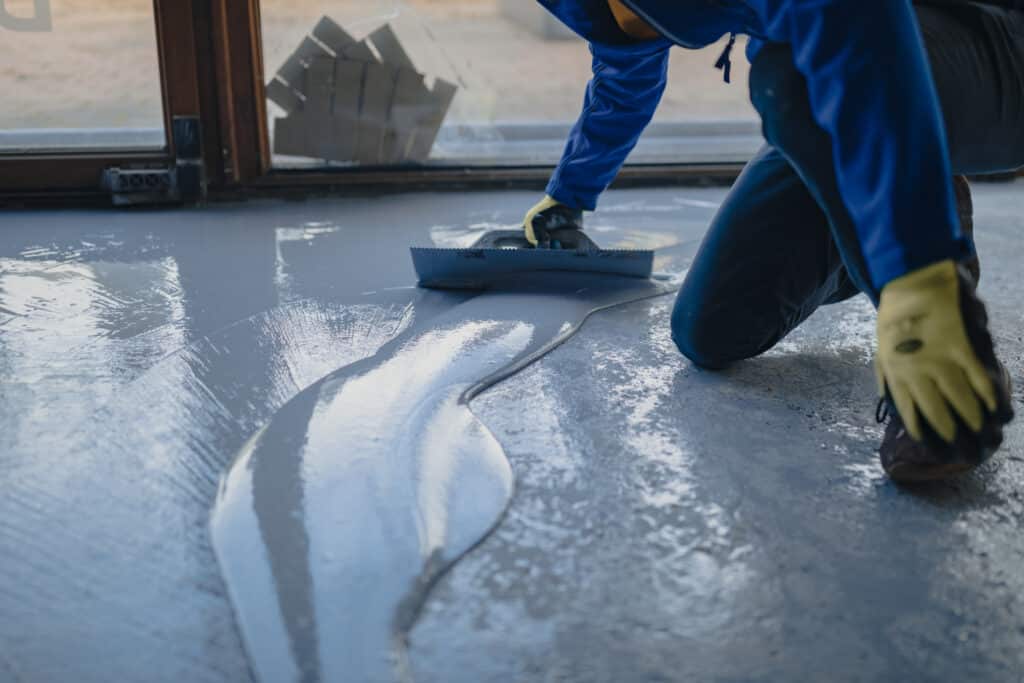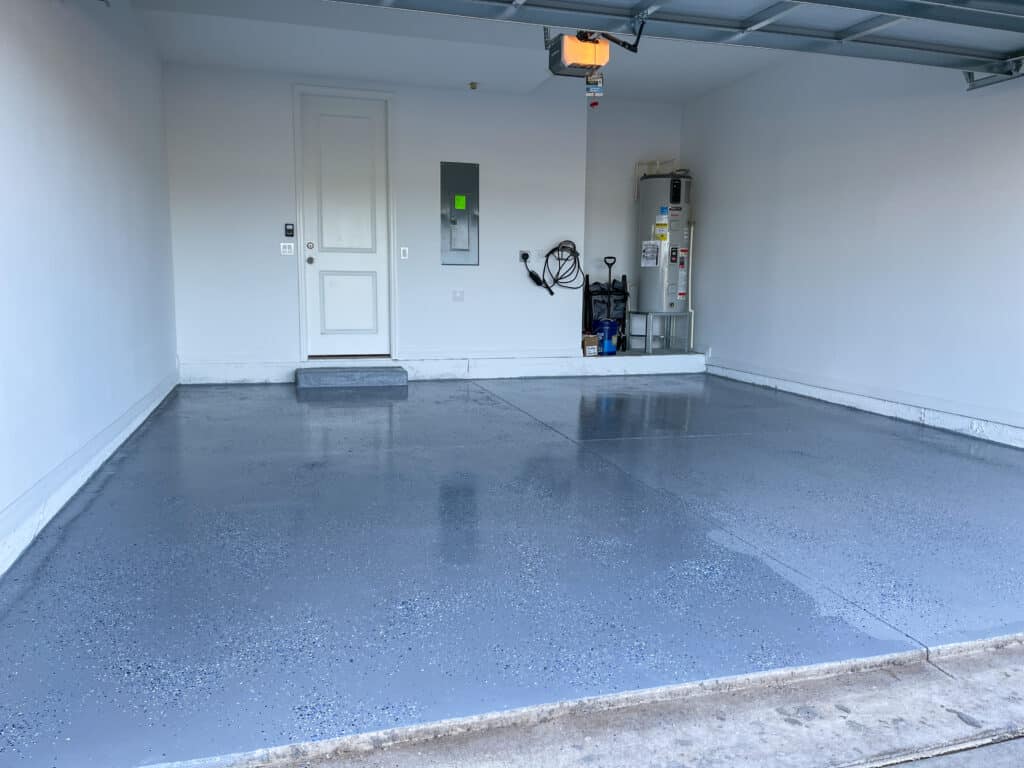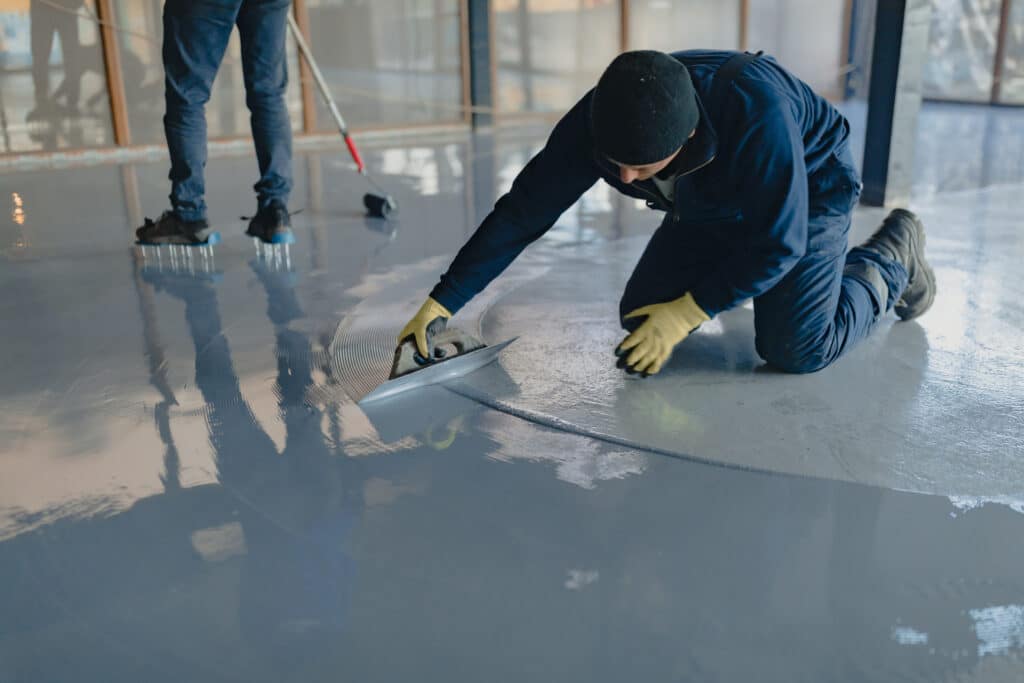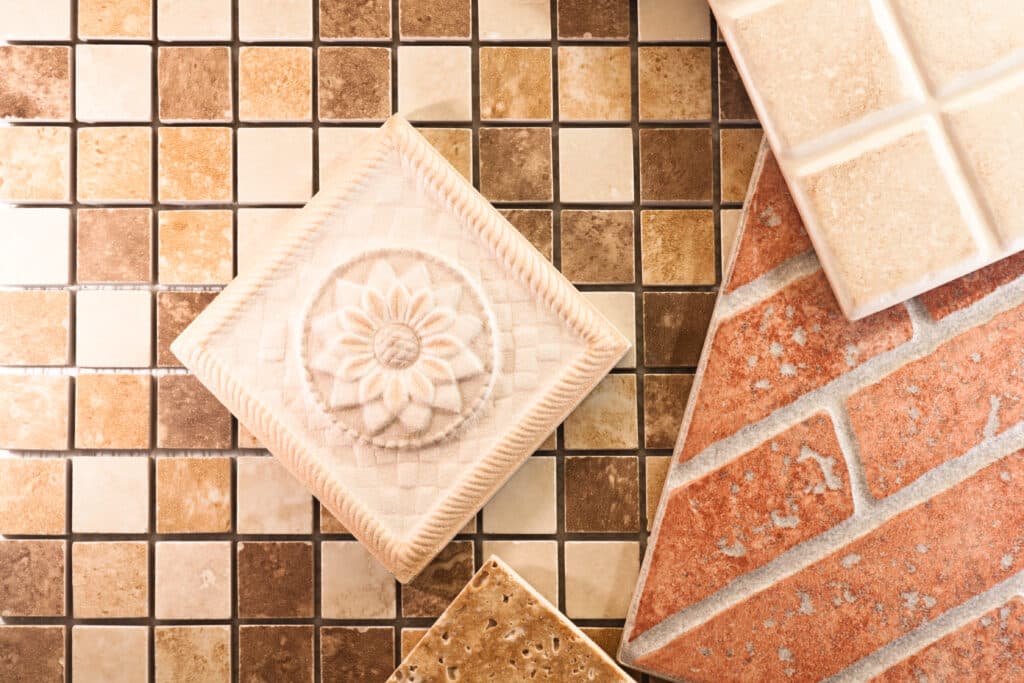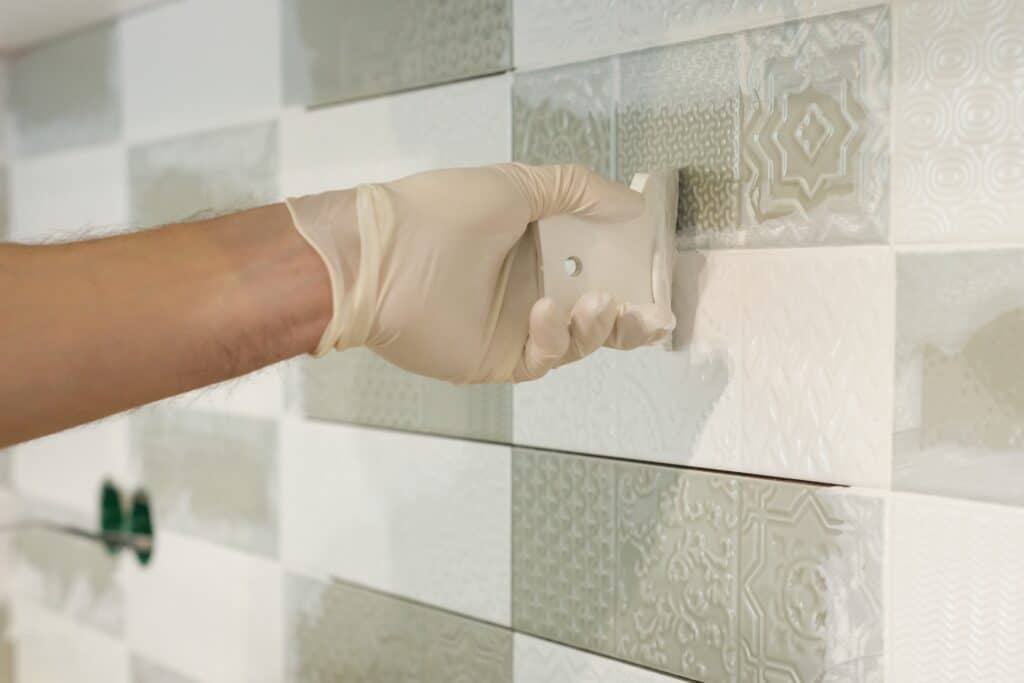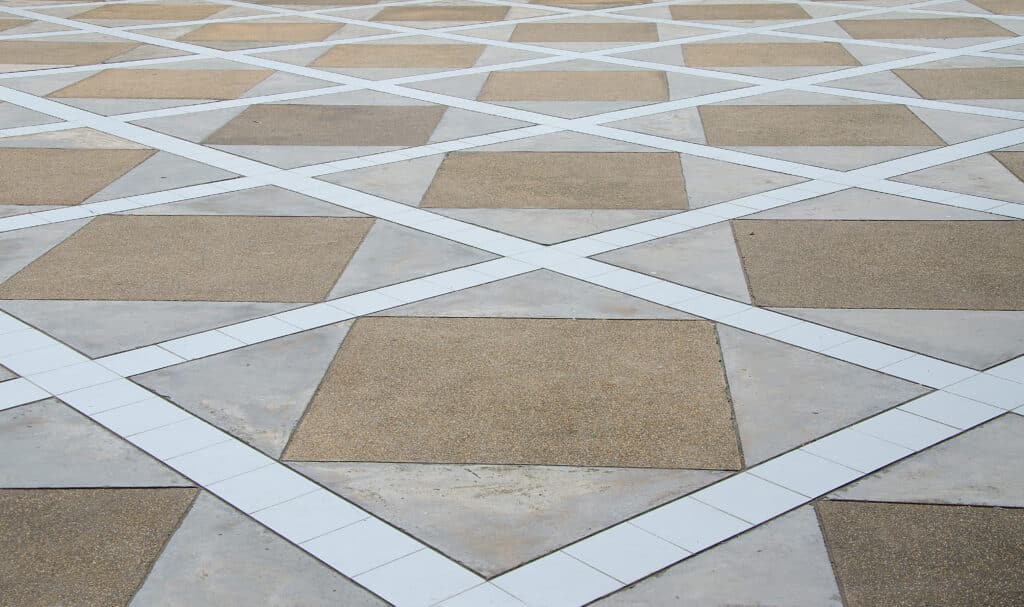Summer is a season unlike any other. It has an inherent vivacity and vibrance that makes us feel young again as we soak up the sun. A patio in summer can be the perfect place to unwind after a day out, or it can be a place to extend the fun by hosting Independence Day barbecues or late nights around the fire. Here are seven suggestions for getting your patio ready for summer this year.
Cover the Patio
Decorating a patio in summer is a fun way to invite the season to begin. However, before you can start adding extras, make sure your patio is ready to handle the heat. Covering the patio in epoxy or polyaspartic will provide protection against the elements for your concrete. Water and other weather can sneak into the nooks and crannies of a concrete patio, breaking it down gradually. Coating your patio will stop this process before it can begin by keeping the elements out.
This will help your patio last longer. It will also improve your patio’s durability. Covering your patio will add a layer of protection that helps it hold up better under foot traffic and food stains. Do you plan on hosting parties or barbecues on your patio in summer? A good coating will prevent grease and ketchup from compromising your concrete, and it will make the space much easier to clean.
Last but not least, coating a patio improves the appearance of the space. Covered concrete has a sense of luxury, a finished look that is sure to wow. The process is also highly customizable, so you can choose the colors and designs that will best suit your tastes. To enjoy the benefits of a covered patio for the entire summer season, don’t delay in having it coated.
Furniture
No patio in summer is complete without the right furniture. Outdoor furniture makes a patio a welcoming place, inviting people to stay a while. You can display cushions that you can change out depending on the season or upcoming holiday, adding festivity to your space. Add a table to bring meals outside, or try a porch swing for some elevated seating. If you want to bring the great outdoors a little closer to home, you might consider adding a hammock.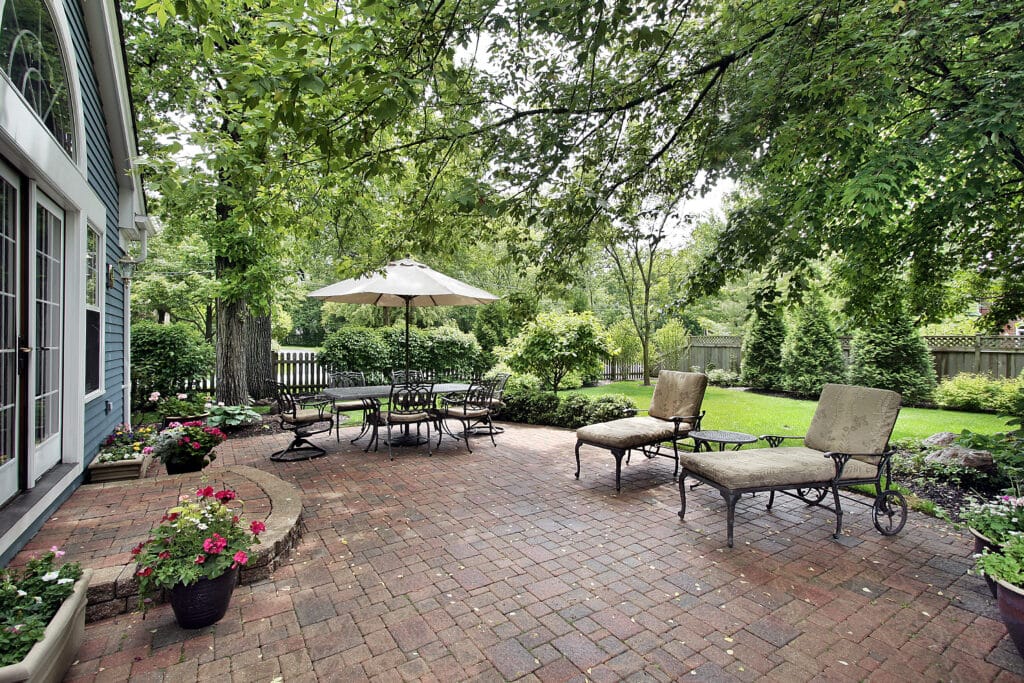
Add Shade
If you want your patio to be a haven from the heat, you probably want to make shade a priority. Patio covers and solar shades can make the patio a comfortable place even when the sun is at its highest point. You have a wide selection of colors and designs, and you can even automate your shades on treads to give you the option of using them or not.
Lights
No updates to a patio in summer are complete without lights. Lights allow homeowners to add a bit of magic in addition to the more practical benefit of being able to see better. They also extend the time you can spend out on your patio. There is an almost unlimited supply of patio lighting available, including string lights, fairy lights, sconces, lanterns. Have you considered mood lighting? Tiki torches add a creative flair. If you tend to get chilly, even on summer nights, you might try adding a heat lamp.
Include a Fire Feature
A fire feature, such as a fire pit or a fireplace, allows homeowners to extend the amount of time in the year they can spend outside. It creates a cozy or trendy environment, and depending on the kind of feature you choose, might be able to have smores on your very own patio.
Before installing a fire feature on your patio, check the regulations in your area. Sometimes open flames are not allowed or a permit is required to have them. A gas-powered outdoor fireplace may be a handy workaround.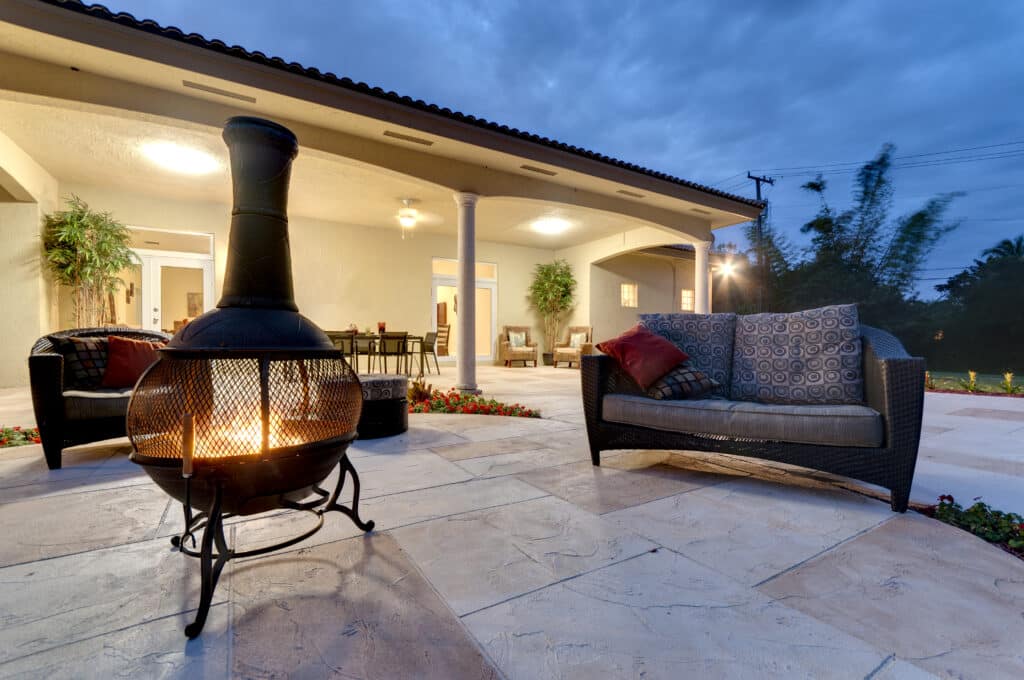
Add a Water Feature
A water feature is an excellent addition to any patio in summer. The soothing sounds of cascading water from a fountain are sure to make the patio a more inviting place during the warmer months. You can also take a more practical route and install an outdoor shower for cleaning off sandy or muddy feet.
Plants
Plants are a great addition to any patio. They add color and visual interest, and they can really cool down the patio in summer. They also help make a patio a more calming place. You can choose to grow herbs and plants that can be added to meals or eaten right out, making for more sustainable living. Consider adding plants in pots or wall planters.

